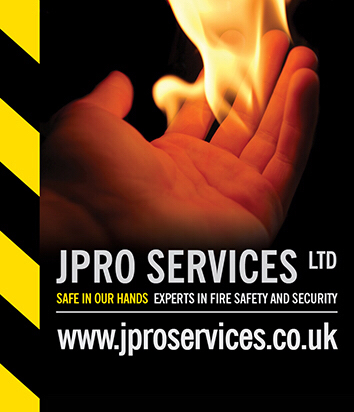Information
-
Fire Risk Assessment
-
Company Address
-
Type of Premises
-
Average number of staff on duty
-
Average number of other persons at location
-
Other persons onsite Visitors/Contractors
-
Conducted on
-
Prepared by
Fire Evacuation Procedures
-
1: Are suitable written evacuation procedures in place?
-
2: Are there suitable specific arrangements made for those with special needs?<br><br>
-
3: Is a fire procedures notice displayed?
-
4: Is a fire evacuation procedure notice displayed on each level of the premises at the exit to the stairway?
-
5: Is a fire evacuation procedure practiced?
-
6: Is a fire evacuation procedure notice displayed in all staff rooms?
Means of Escape
-
7: Are regular checks made to ensure that escape routes/gangways are free of obstructions?
-
8. Are floor surfaces on escape routes free of slipping/tripping hazards?
-
9. Are wall coverings on escape routes non combustible?
-
10. Are escape stairs (including external) maintained in a safe condition?
-
11. Do exits lead to a place of safety e.g. away from traffic, clear of the building etc.?
-
12. Are all escape doors available for use?
-
13. Are all escape doors operating satisfactorily?
-
14. Are self closing devices on doors maintained in good working order?
-
15. Are fire notices displayed?
-
16. If refuges are provided, are they signposted and kept clear of obstructions?
-
17. Are all escape routes illuminated by emergency lighting?
-
18. Can all doors used for means of escape be opened easily and immediately without the use of a key, swipe card or keypad?
Fire alarm/detection system
-
19. Has a fire alarm system been installed to BS 5839, Part 4?
-
20. Is the fire alarm system maintained in working order?
-
21. Are all “break glass” points clearly signposted and in working order?
-
22. Is the fire alarm system audible in all parts of the building?
Fire-fighting equipment
-
23. Is the provision of fire fighting equipment adequate in relation to the risks?
-
24. Have they been serviced within the last year?
-
25. Are they wall mounted?
Fire Brigade
-
26. Is access for Fire Brigade vehicles available?
-
27. Are assembly points in safe areas, clear of the building and away from Fire Brigade vehicle access and parking?
-
28. Has a specific person been assigned to liaise with Fire Brigade in the event of a fire?
Fire precautions register
-
29. Is a Fire Precautions Register provided for these premises?
-
30. Is it being completed correctly?
Safety Training
-
31. Do all staff receive fire safety awareness training on induction with annual refresher training?
-
32. Are there sufficient numbers of Fire Wardens?
-
33. Are fire wardens trained in assisting evacuations?
-
34. Do all Fire Wardens hold current valid certificates of training?
Electrical safety
-
35. Are electrical cables sited where damage will be minimised?
-
36. Is portable electrical equipment inspected/tested?
-
37. Is there a suitable procedure in place to prevent faulty equipment being used whilst awaiting repairs?
-
38. Are fixed installations inspected/tested ?<br> <br>
-
39. Are electrical cupboards/switchrooms suitably identified i.e. “electrical hazard” sign and “authorised person only” sign?
-
40. Is there restricted access i.e. access to authorised persons only?
-
41. Is there clear access to switchgear?<br>
-
42. Are any combustible materials stored at least one metre away from switchgear?<br>
Workplace fire prevention
-
43. Is all documentation required by fire safety legislation available for inspection at any time (e.g. Fire Risk Assessment)?<br>
-
44. Is a fire plan available?
-
45. Is upholstery of furniture in compliance with the British Standard (usually signified by the Kite Mark) and is it in good condition?<br>
-
46. Are fire safety standards considered when ordering replacements for furnishings, furniture or equipment?
-
47. Is a no Smoking Policy enforced?<br>
-
48. Are “NO SMOKING” signs displayed, especially in higher risk areas such as lifts, kitchens and boiler rooms?<br>
-
49. Where smoking is permitted, are facilities for the disposal of smoking materials suitable?
-
50. Is the workplace regularly inspected to ensure that it is free of accumulated rubbish i.e. wastepaper or other materials which could catch fire or be set alight?<br>
-
51. Are metal bins (without plastic bin liners) provided in public areas?
-
52. Are all public rooms inspected last thing at night to ensure that appliances have been switched off unless designed to stay on.?<br>
-
53. Are fat deposits removed regularly from ovens, ranges, fume hood extractors and ducts in kitchens?<br>
-
54. Is emergency lighting maintained in full working order?<br>
-
55. Is petrol used and stored in accordance with relevant Standards?<br>
-
56. Is L.P.G. used and stored in accordance with relevant Standards?<br>
Other
-
ACTION IDENTIFIED & DATE FOR COMPLETION OF ACTIONS:
-
Select date
-
Comments
This Fire Risk Assessment document should be reviewed on a regular basis. It must also be reviewed whenever any material changes take place in the workplace or any other change that may affect this risk assessment.
-
Assessors Signature:
-
Select date
-
Managers Signature:
-
Select date












